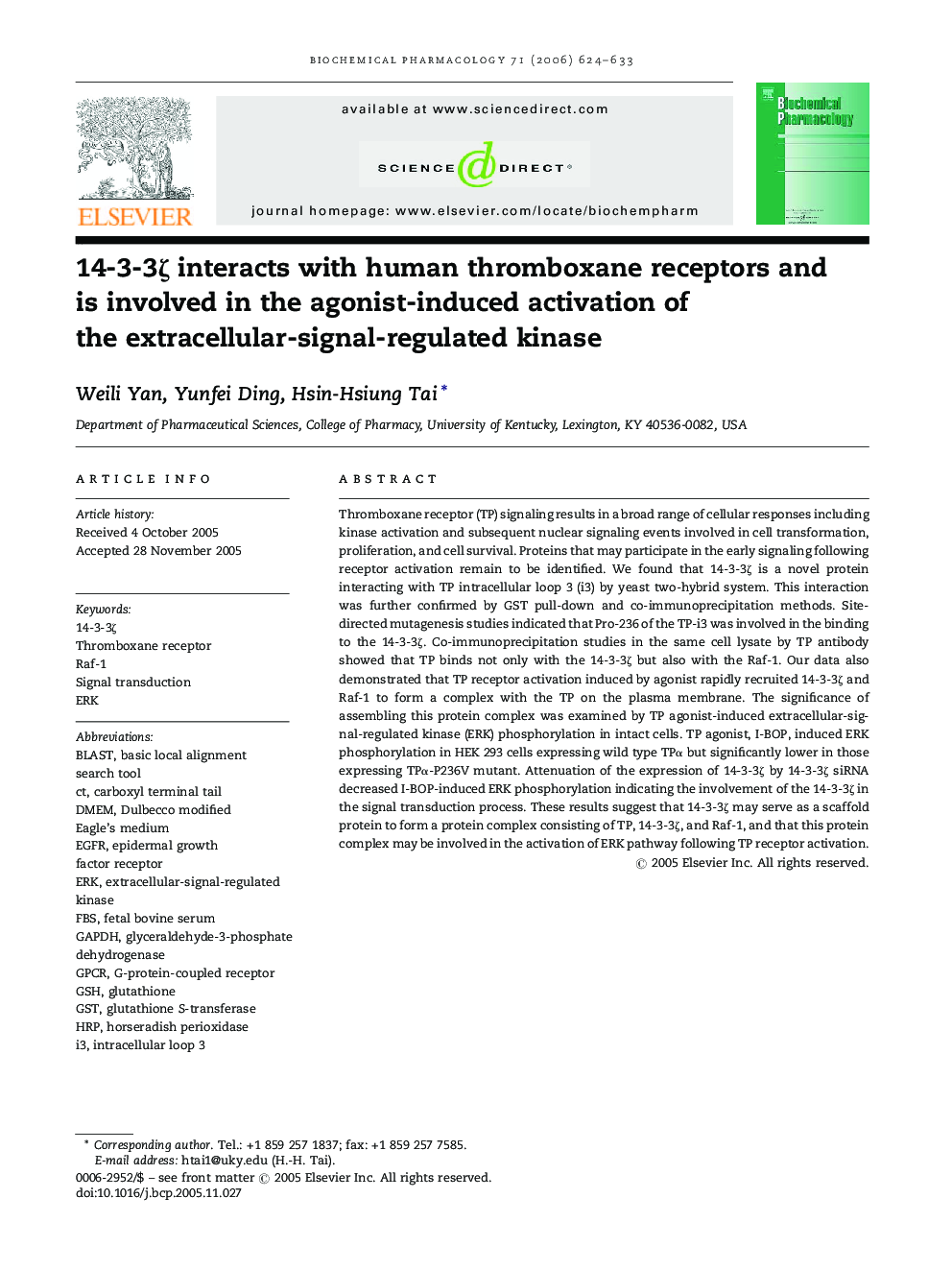| Article ID | Journal | Published Year | Pages | File Type |
|---|---|---|---|---|
| 2515341 | Biochemical Pharmacology | 2006 | 10 Pages |
Thromboxane receptor (TP) signaling results in a broad range of cellular responses including kinase activation and subsequent nuclear signaling events involved in cell transformation, proliferation, and cell survival. Proteins that may participate in the early signaling following receptor activation remain to be identified. We found that 14-3-3ζ is a novel protein interacting with TP intracellular loop 3 (i3) by yeast two-hybrid system. This interaction was further confirmed by GST pull-down and co-immunoprecipitation methods. Site-directed mutagenesis studies indicated that Pro-236 of the TP-i3 was involved in the binding to the 14-3-3ζ. Co-immunoprecipitation studies in the same cell lysate by TP antibody showed that TP binds not only with the 14-3-3ζ but also with the Raf-1. Our data also demonstrated that TP receptor activation induced by agonist rapidly recruited 14-3-3ζ and Raf-1 to form a complex with the TP on the plasma membrane. The significance of assembling this protein complex was examined by TP agonist-induced extracellular-signal-regulated kinase (ERK) phosphorylation in intact cells. TP agonist, I-BOP, induced ERK phosphorylation in HEK 293 cells expressing wild type TPα but significantly lower in those expressing TPα-P236V mutant. Attenuation of the expression of 14-3-3ζ by 14-3-3ζ siRNA decreased I-BOP-induced ERK phosphorylation indicating the involvement of the 14-3-3ζ in the signal transduction process. These results suggest that 14-3-3ζ may serve as a scaffold protein to form a protein complex consisting of TP, 14-3-3ζ, and Raf-1, and that this protein complex may be involved in the activation of ERK pathway following TP receptor activation.
